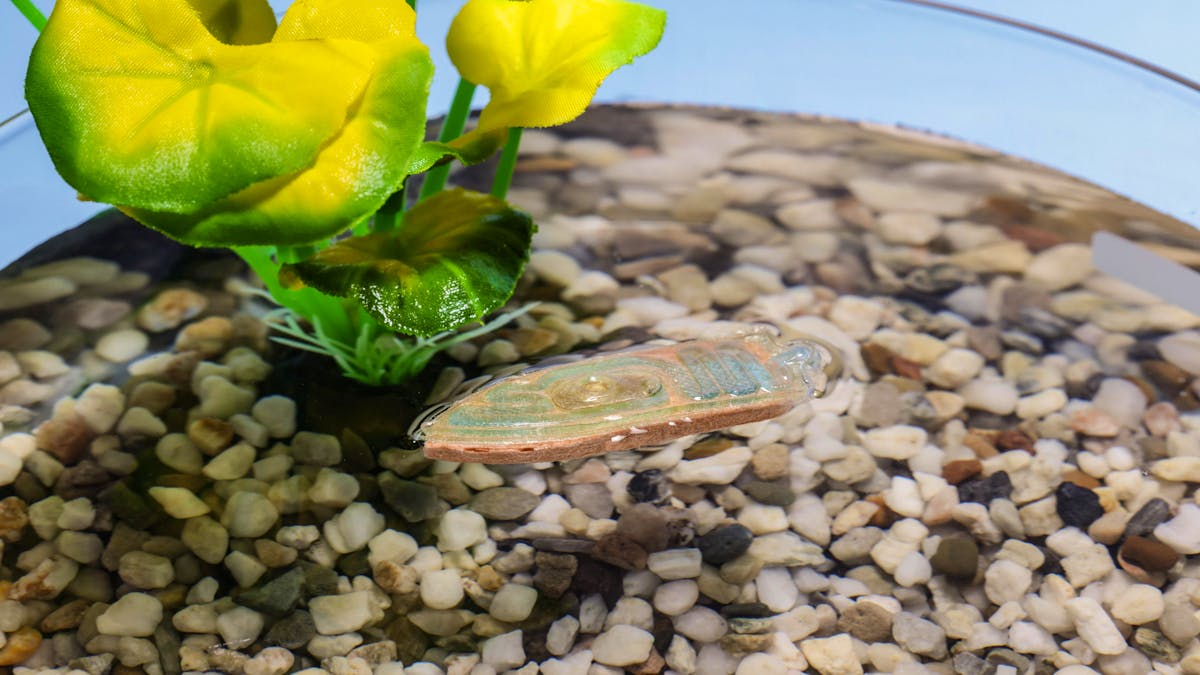The EPFL has designed a edible robot which represents a safe – and nutritious – alternative to environmental sensors developed from artificial and electronics. This boat -shaped robot benefits from the same phenomenon as that used by certain aquatic insects to propel themselves on the surface of the water: the marangoni effect.
A chemical reaction inside a tiny removable room produced CO2 which, in turn, enters a fuel channel to expel the latter. The sudden decrease in the surface tension of the water caused by the ejected fuel then propels the robot forward.
This clever design is not only effective, allowing robots to move freely on the surface of the water for several minutes, but also completely biodegradable and harmless. Indeed, the components of the chemical reaction, citric acid and baking soda are often used for a famous school experience simulating a volcanic eruption. And the “fuel” is propylene glycol, a liquid that is frequently found in skin care products.
“Although the development of miniature swimming robots for natural environments has progressed quickly, these are generally developed from plastics and include batteries and other electronic components. This poses problems for large -scale deployment in sensitive ecosystems, explains Shuhang Zhang, doctoral student at EPFL. In these works, we show how these materials can be replaced by fully biodegradable and edible components. ”
Shuhang Zhang and a team from the Laboratory of Intelligent Systems, under the leadership of Dario Floreano of the Faculty of Science and Technology of the Engineer, recently published their research in “Nature Communications”.
Designed with fish for fish
The robot is designed to be not only harmless for aquatic fauna, but also beneficial. To add resistance and rigidity to the external structure, which measures approximately 5 cm long, the researchers used fish foods with a 30% higher protein content and a low -fat fat content than the commercially available granules. At the end of life, the device can therefore serve as food for aquatic fauna.
The EPFL team plans to deploy robots in large numbers. Each device would be equipped with biodegradable sensors to collect environmental data such as water, temperature, pollutants and the presence of microorganisms, which could be read after collection or remote sensing.
Rather than precisely controlling the directional movement of robots, the team made variants “left turn” and “right turn” by modifying the asymmetrical design of the fuel channel. This level of control is all that is necessary to disperse the robots on the surface of the water, and their pseudo-random movements imitate those of insects, which makes it perfect containers to provide nutrients or fish with fish.
Researchers even advance the hypothesis that robots could stimulate the cognitive development of captivity fish, but other research is necessary to explore this question, because no animal experience has been carried out for the study of the EPFL.
These works are the latest innovation in the booming field of edible robotics and robotic power supply. The Laboratory of Intelligent Systems has already published several articles on edible devices, including flexible edible actuators such as food manipulators and pet food, edible control circuits and edible conductive ink for monitoring crop growth.
“The replacement of electronic waste with biodegradable materials is the subject of in -depth studies, but edible materials with targeted nutritional functions and profiles have hardly been envisaged, and open a world of opportunities for human and animal health,” said Dario Floreano.

